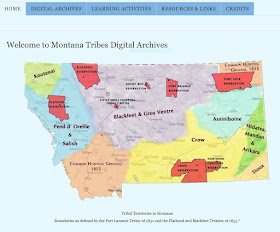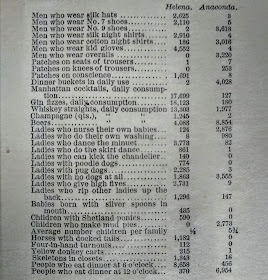Kelly Burton, Film Archivist
Montana Historical Society
In the fall of 1935 and winter of 1936, the Helena Valley
experienced an earthquake swarm that took the life of four area citizens and
caused a great deal of property damage. An October 1936 report on the event by seismologist
Franklin P. Ulrich describes a series of quakes that began with two small
shocks on October 3, 1935: “There was a quiet spell until October 12, when a
hard shock occurred which was followed by 30 smaller ones. Shocks were felt
daily until October 18, with two hard ones on the 15th. The shock of
October 18 was the first destructive shock. It was followed by a second
destructive shock on October 31, which was of nearly the same intensity.
Between these two shocks, 506 smaller shocks were felt, and up to the end of
March, 1936, 1974 shocks had been felt in the swarm. The personnel of the City
Engineer’s office in Helena has made a survey and finds that more than half the
buildings in Helena were damaged, and that the total damage would be between $3,000,000
and $4,000,000.” (“Helena Earthquakes” by Franklin P. Ulrich, Bulletin of the Seismological Society of
America, October 1936, vol. 26 no. 4)
 |
| PAc 2003-48 EQ# 261 |
One
of the more notable structures to suffer serious damage was Helena High School,
a building which had just been completed in August of 1935. Jean MacNeill Stock,
a member of the graduating class of 1937, recalls the upheaval: “Damage to the
new $500,000 high school was estimated at $250,000. The north end, which housed
the auditorium, chemistry rooms, commercial drawing and auto mechanics
departments, showed great gaps in the wall. Cracks in the earth paralleled the
west wall. In the center of the building, plaster, books and personal
belongings were scattered all over. Outside were piles of bricks. It was
decided school could reopen in two weeks by walling off the damaged sections,
but on Oct. 31 another large tremor hit and wrote finis to the new high
school.” (Great Falls Tribune, June
21, 1964, p. 10)
 |
| H.H.S. "Chemistry" (PAc 200348 EQ# 74) |
 |
| H.H.S. Principal W.W. Wahl (PAc 2003-48 EQ# 71) |
Unable
to find a suitable structure in which to hold high school classes that fall,
the city of Helena ultimately arranged to rehouse students in a series of train
cars furnished by two railroad companies. The Helena Daily Independent from
December 3, 1935 explains the unorthodox arrangement in detail: “School on
wheels will be inaugurated by the Helena high students within the next 10 days,
when 18 coaches, furnished free of charge by the Great Northern and Northern
Pacific Railway companies, will be placed on the tracks to be laid on Lyndale
avenue between the 800 and 1000 blocks. Rails and ties for the tracks are to be
furnished free of charge by the railway companies, the school board paying only
for the labor to lay the tracks. Supervisors for the track-laying will also be
furnished by the railway companies. The school board shall be responsible for
any damage done to the cars, or any injury done to the students while attending
school in them.” (Helena Daily
Independent, December 3, 1935)
 |
| Helena's "high school on wheels" (PAc 90-50) |
 |
| Students posing for a photo (PAc 90-50) |
Though far from ideal, the 18 railway coaches parked in
downtown Helena would ultimately serve as the town’s high school for a full 18
months. Again, Jean MacNeill Stock from the Class of 1937 recalls the
experience: “Dec. 12, high school students went to the damaged building to get
their books and on Dec. 16 classes opened in the rail cars. Classes were 100
minutes’ duration instead of the usual 60. School was in session Monday through
Saturday, from 8:15 a.m. until 5 p.m. High school on wheels was quite a
comedown from the beautiful well-equipped building we had been so rudely shaken
out of. The cars were of ancient vintage even for those days. We missed our
laboratories, drawing tables and convenient desks. Each car was to have had its
own heating system but something went wrong and a central system was installed.
It proved unsatisfactory. In the winter we kept on our coats and overshoes, and
still were cold. Then, when it warmed up in the spring, we nearly suffocated –
the windows couldn’t be opened. Nevertheless, the high school on wheels was
most welcome to us; we were able to finish the classes we feared might be
delayed for a long time. It wasn’t until the fall of 1937 that the high school
building was ready for use again.” (Great
Falls Tribune, June 21, 1964, p. 10)
 |
| Attending class in winter (PAc 98-26) |
 |
| Icicles between train coaches (PAc 98-26) |
In addition to still photographs of the converted train cars
taken by professional Helena photographer Les Jorud, the Montana Historical
Society also has two 16mm reels shot by Jorud, as well as two 8mm reels from
other home movie collections. The Scott Family home movie (PAc 85-58) shows the
students and faculty engaged in a snowball fight, the exterior of the coaches
themselves, and people gathered in front of the improvised administration
building with its hand-painted “Helena High School” sign. Winter plays a central
role in the Schafer Family home movie (PAc 98-26) of the school, and we see long
icicles hanging from the sides of rail cars, students and faculty coming and
going in a snowstorm from steaming coaches, and people socializing outdoors
despite the weather. As well as capturing the social life between classes,
Jorud also shows students posing on bleachers for a group photo in front of the
administration building, and railway men moving both tracks and trains on the
day the “high school on wheels” is finally decommissioned. The event is
commemorated with signs that run the length of each coach: “High School on
Wheels – Helena, Montana. 9 of these coaches were loaned by Great Northern
Railway after the earthquakes in 1935 till June 4th, 1937.” Rail
cars loaned by Northern Pacific Railway carried a similar sign.
 |
| Students outside the administration office (PAc 85-58) |
 |
| Workers laying new rails to remove train cars (PAc 90-50) |






































